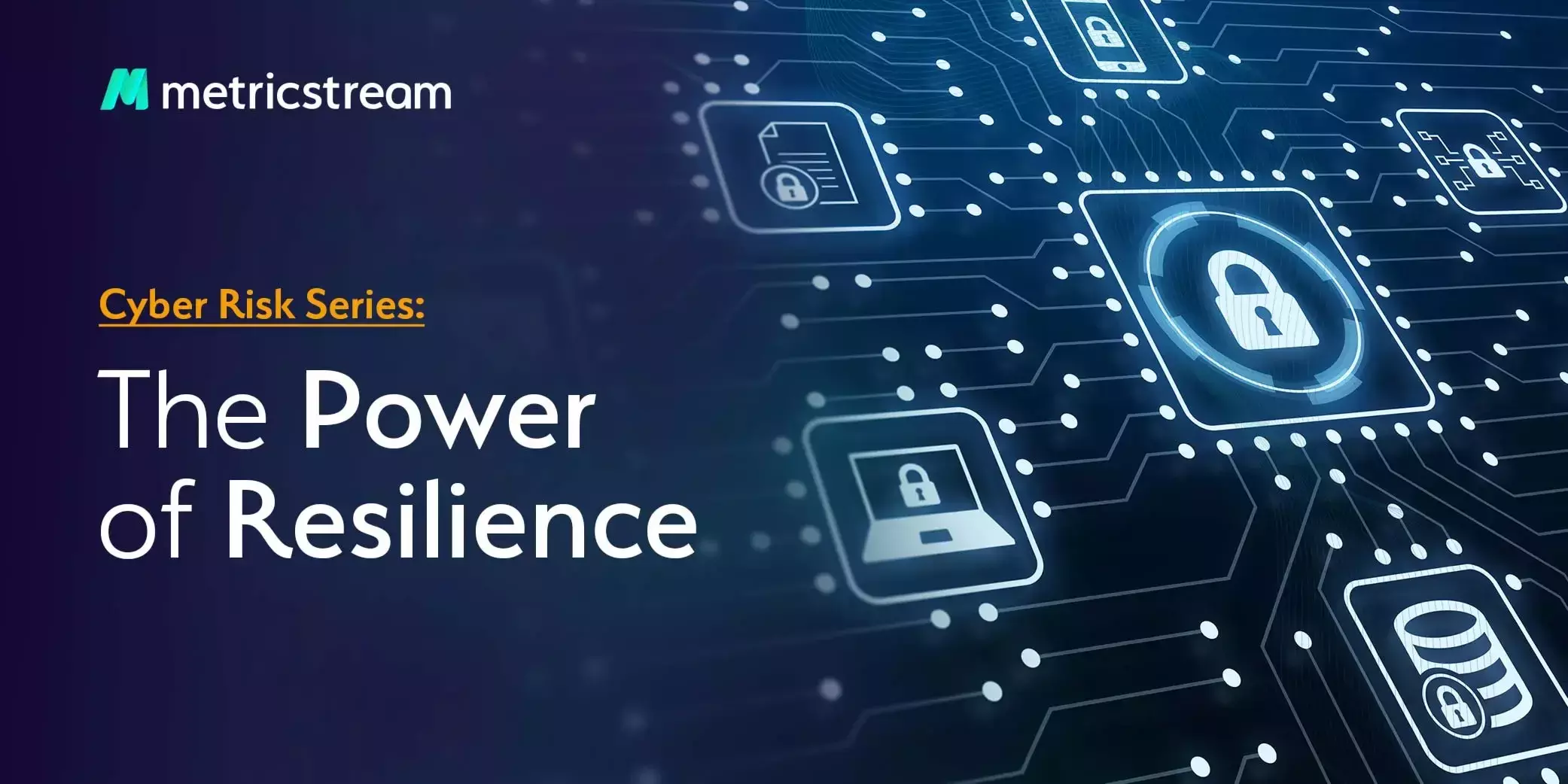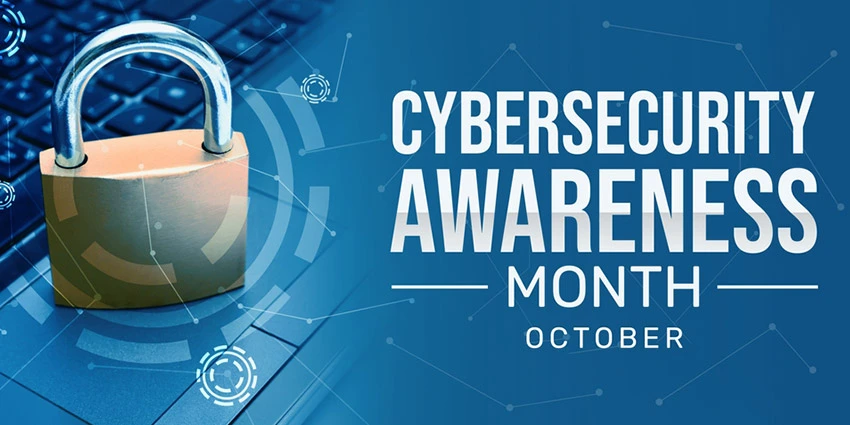Cybersecurity vs Cyber Risk Management: What are the Similarities and Differences?
- IT Risk & Cyber Risk
- 27 November 24

Introduction
Cybersecurity and cyber or IT risk management are essential components of any organization's strategy to navigate the complex and ever-evolving landscape of cyber threats.
But while the two terms – cybersecurity and cyber risk management-- are often used interchangeably, they are two distinct practices that work in conjunction to protect an enterprise from cyber attacks. As the threat landscape evolves further, it is crucial to have calculated and robust strategies for both to maintain a strong, secure, and proactive digital environment. And to do so, it is important to clearly understand the similarities and differences between the two.
What is Cybersecurity?
Cybersecurity is the practice of protecting data, systems, networks, and devices from unauthorized access, damage, or theft. It combines people, processes, and technologies to ensure confidentiality, integrity, and availability of information. It covers areas such as infrastructure security, disaster recovery, vulnerability management, and user awareness — with a focus on threat prevention, detection, and response.
Key Aspects of Cybersecurity
Physical Security
Protects systems from theft, fire, or vandalism using methods like access controls, security guards, and surveillance.
Network Security
Prevents unauthorized access to networks using firewalls, antivirus tools, intrusion detection, and encryption.
Application Security
Ensures software is safe from attacks by building in protections during design and patching vulnerabilities.
Data Security
Safeguards sensitive information (enterprise, customer, third-party) with encryption, authentication, access control, and backups.
What is Cyber and IT Risk Management?
Cyber and IT risk management is the process of identifying, assessing, and mitigating risks associated with digital assets, technology infrastructure, and cyber threats. Rather than focusing solely on security defenses, cyber risk management takes a broader approach by evaluating potential vulnerabilities, financial implications, and business continuity risks.
Key components of cyber risk management include:
- Risk Identification: Recognizing vulnerabilities in IT systems, software, and third-party vendors.
- Risk Assessment: Evaluating the likelihood and impact of cyber threats on business operations.
- Risk Mitigation: Implementing security controls, policies, and frameworks to reduce risk exposure.
- Compliance Management: Ensuring adherence to regulatory requirements such as GDPR, HIPAA, and ISO 27001.
- Incident Recovery Planning: Preparing response strategies to minimize damage from cyber incidents.
Cyber risk management helps organizations prioritize security investments, align cybersecurity strategies with business goals, and establish long-term resilience against evolving threats.
Cyber and IT risk management involves identifying, assessing, prioritizing, managing, and responding to the various risks associated with information/data, IT assets, and the use of digital technologies, and their potential impact on an organization. Identifying and mitigating risks of this nature requires strategic planning and informed quick decision-making.
The key steps/processes involved in cyber / IT risk management are:
Identify
– In this step, it is crucial to identify and inventory the digital assets, potential threats, and vulnerabilities, and to determine the criticality and value of each asset in terms of its impact on business operations.
Risk Assessment
– This is a systematic process that evaluates an organization's vulnerabilities, threats, and potential impacts related to its information systems and digital assets. It involves defining the scope, identifying critical assets, and pinpointing potential threats. The assessment also includes examining system vulnerabilities and analyzing risks based on likelihood and impact. Mitigation strategies are then developed to reduce or address the identified risks, and an action plan is created. Ongoing monitoring ensures the effectiveness of implemented controls and the need for adjustments. Through this process, organizations can gain a clearer understanding of their cyber risk posture, enabling informed decisions and improved resilience against cyber threats.
Risk Mitigation
- This is followed by risk mitigation or the development and implementation of strategies to address identified risks. These may include measures like implementing robust security controls, adopting best practices, creating processes to be followed, and even inculcating a risk-aware culture within the enterprise.
Risk Monitoring and Response
– This stage involves continuous monitoring of assets, systems, and networks to detect potential cyber incidents. It also includes the implementation of a bespoke incident response plan and processes to analyze incidents and contain and remediate them, communicate with essential stakeholders, and conduct post-incident analysis.
Review and Update
– in this stage, regular review and updates to the cyber risk assessment should be carried out to account for changes in the threat landscape, technology landscape, and business environment. Cyber risk teams must assess the effectiveness of implemented controls and adjust mitigation strategies as needed and consider conducting periodic comprehensive assessments to ensure ongoing risk management effectiveness.
Examining the Similarities
Evidently, there is some overlap and similarities between cybersecurity and cyber risk management strategies, and they complement each other:
Protection
- Both practices aim to protect enterprise assets—including systems, devices, networks, and data—from cyber threats.
Threat Awareness
- Both practices aim to improve threat awareness as they require a thorough understanding of the evolving risk landscape and the threats facing the organization.
Minimize Impact
- Both practices aim to minimize not just the likelihood of threats and risks, but also their impact on the organization.
Key Difference Between Cybersecurity and Cyber Risk Management
Cybersecurity focuses on technical defenses like firewalls and encryption to protect systems from threats, while cyber risk management takes a broader, strategic view by assessing, prioritizing, and mitigating risks based on business impact. Cybersecurity is a subset of risk management, which also considers compliance, governance, and financial implications. Despite overlaps, their scope and approach differ significantly.
| Point of Difference | Cybersecurity | Cyber Risk Management |
|---|---|---|
| Scope and Focus | Primarily focuses on protecting computer systems, networks, and data from unauthorized access, attacks, and damage. It involves implementing preventive measures, such as firewalls, encryption, access controls, and security patches, to safeguard against potential threats. | The focus is broader and involves the identification, assessment, and prioritization of potential risks and vulnerabilities in an organization's digital infrastructure. It encompasses not only technical aspects but also the business impact and financial consequences of cyber threats. It aims to manage risks proactively, considering a range of factors such as threat likelihood, potential impact, and risk tolerance. |
| Objectives | To establish a secure environment, protect sensitive data, maintain confidentiality, integrity, and availability of information, and prevent unauthorized access and malicious activities. | To identify, assess, and mitigate potential risks to the organization's information assets. It involves understanding the likelihood and potential impact of various cyber risks and implementing strategies to minimize or transfer those risks. |
| Approach | Focuses on implementing security measures, policies, and technologies to prevent and detect security breaches. It involves deploying firewalls, antivirus software, intrusion detection systems, and other security controls to protect against known threats and vulnerabilities. | Takes a holistic approach that goes beyond technical controls. It involves risk assessment, risk analysis, risk treatment, and risk monitoring. This includes identifying and prioritizing risks, implementing risk mitigation strategies, developing incident response plans, and regularly monitoring and updating risk management practices. |
| Perspective | Typically takes a narrow view from a technical standpoint, emphasizing the protection of systems and networks. It focuses on defending against specific threats and vulnerabilities using technical controls and measures. | Takes a broader organizational perspective. It considers business objectives, regulatory compliance, legal implications, reputation management, and financial consequences. |
| Similarities | Both aim to protect enterprise assets (systems, devices, networks, and data), improve threat awareness by understanding the evolving risk landscape, and minimize both the likelihood and impact of threats. | Same as cybersecurity, but viewed through a broader, risk-oriented lens. |
One can consider cyber risk management as the strategic foundation that assesses a wide variety of risks and identifies ways in which to mitigate each one, while cybersecurity is a tactical, hands-on approach to defending assets against whatever threatens them. Managing cyber risk requires a deep understanding of the potential consequences of a cyber incident and effective implementation of risk mitigation strategies to minimize the impact on an organization's objectives and stakeholders.
Cybersecurity and cyber risk management align in their objective of safeguarding organizations against cyber threats, yet they adopt distinct perspectives and methodologies. The practices complement each other and have equally important roles in ensuring comprehensive protection and effective risk mitigation. By integrating both disciplines into their overall cybersecurity and risk management strategies, organizations can build a robust and proactive defense posture against a continuously evolving risk landscape.
Proactively Manage Cyber Risk with MetricStream
MetricStream’s IT and cyber governance, risk, and compliance solution, CyberGRC empowers organizations to connect all types of cyber risk data from across the enterprise and leverage actionable business intelligence to make data-driven decisions to build cyber resilience. With CyberGRC, your organization can:
- Gain a single, consolidated, and comprehensive view of your cyber risk posture across all risk areas and objects
- Complement the cyber security tools to reduce the risk of cyber breaches with active risk management
- Ensure compliance with cyber-related regulations and frameworks, thereby reducing compliance risk
- Streamline the management of IT and cyber policies and documents and ensure compliance with all
- Identify, assess, mitigate, and monitor third-party IT risks, while also proactively managing vendor compliance
- Measure cyber risk exposure in quantified terms, leading to better investment decisions and effectively determining ROI on controls and tools
- Continuously monitoring IT controls and processes for improved compliance and security
Want to learn more about how CyberGRC can help your organization build an effective and resilient cyber risk management program? Request a demo now.
Check out our latest eBooks on cyber risk:
Cyber Risk Management for Energy Companies
7 Top Cyber Risk Strategies for Banking and Financial Services
5 Connections Every Cyber Risk Leader Must Make for Driving Cyber Resilience
Frequently Asked Questions
What is the difference between cybersecurity and cyber risk management?
Cybersecurity involves protecting digital assets through technical controls, while cyber risk management focuses on assessing and mitigating risks to ensure business resilience.
Is risk management part of cybersecurity?
Yes, risk management is an essential component of cybersecurity, helping organizations identify, assess, and mitigate potential threats to IT infrastructure and sensitive data.
What are the five elements of cyber risk management?
The five key elements of cyber risk management are risk identification, risk assessment, risk mitigation, compliance management, and incident recovery planning.








